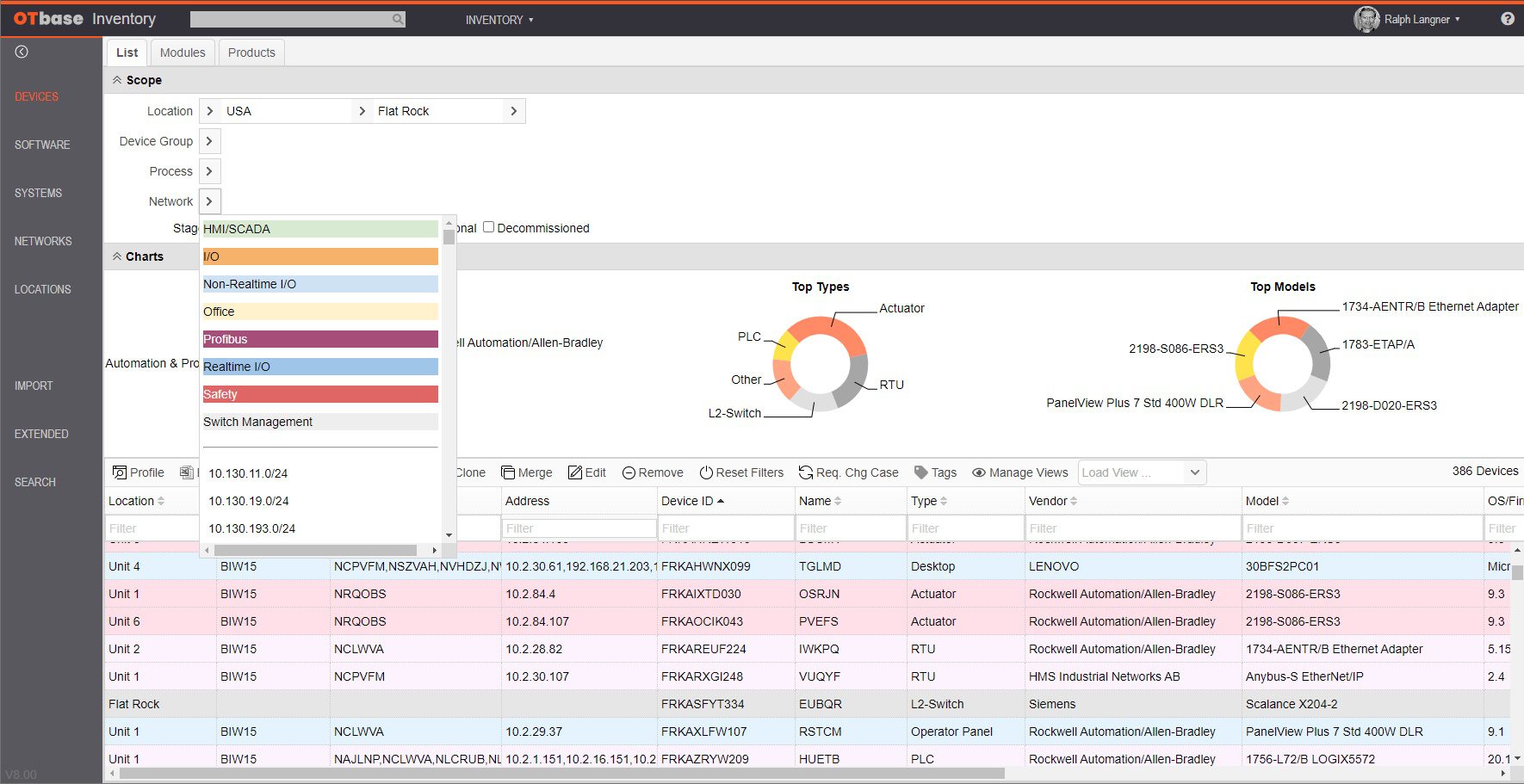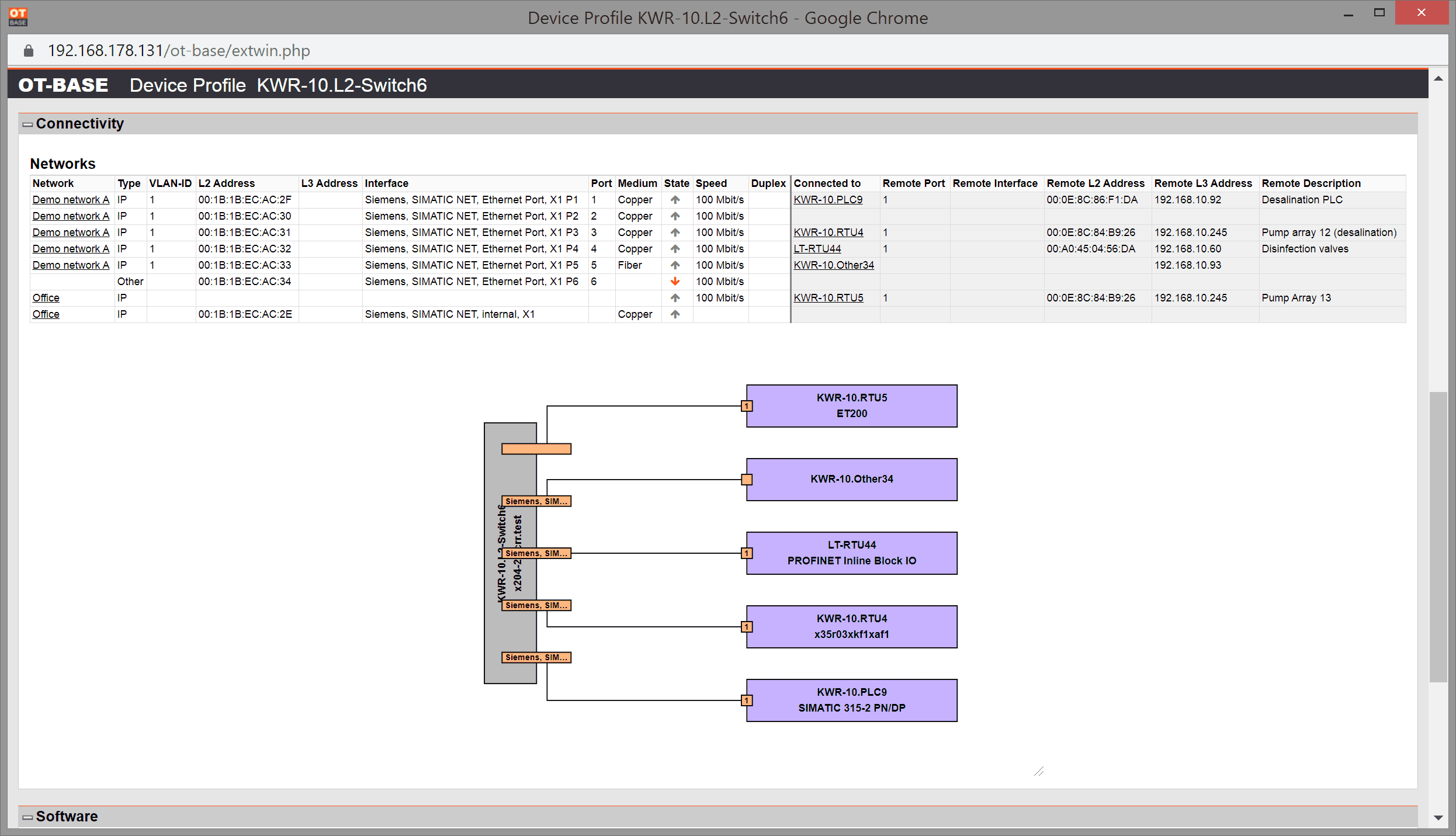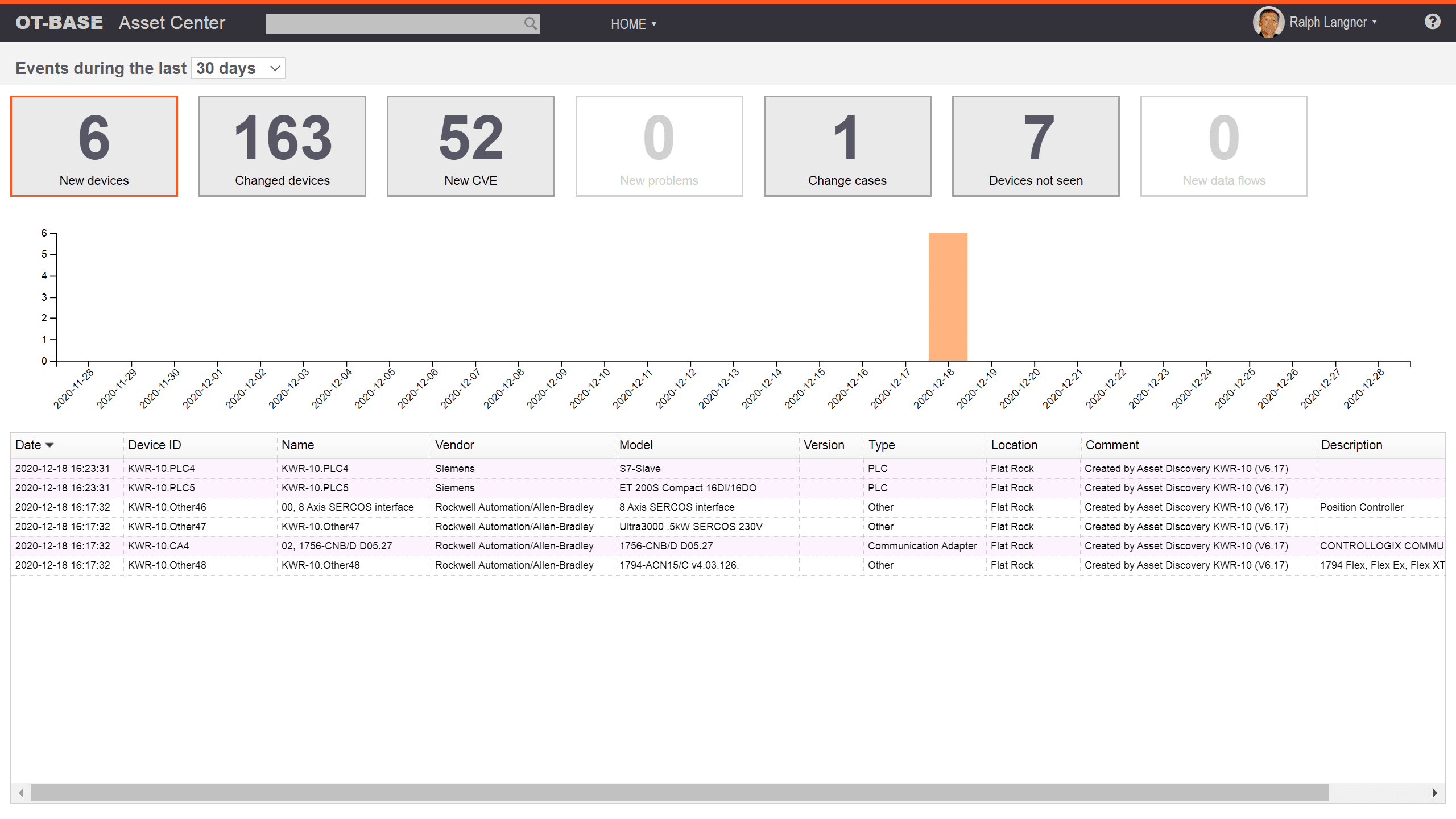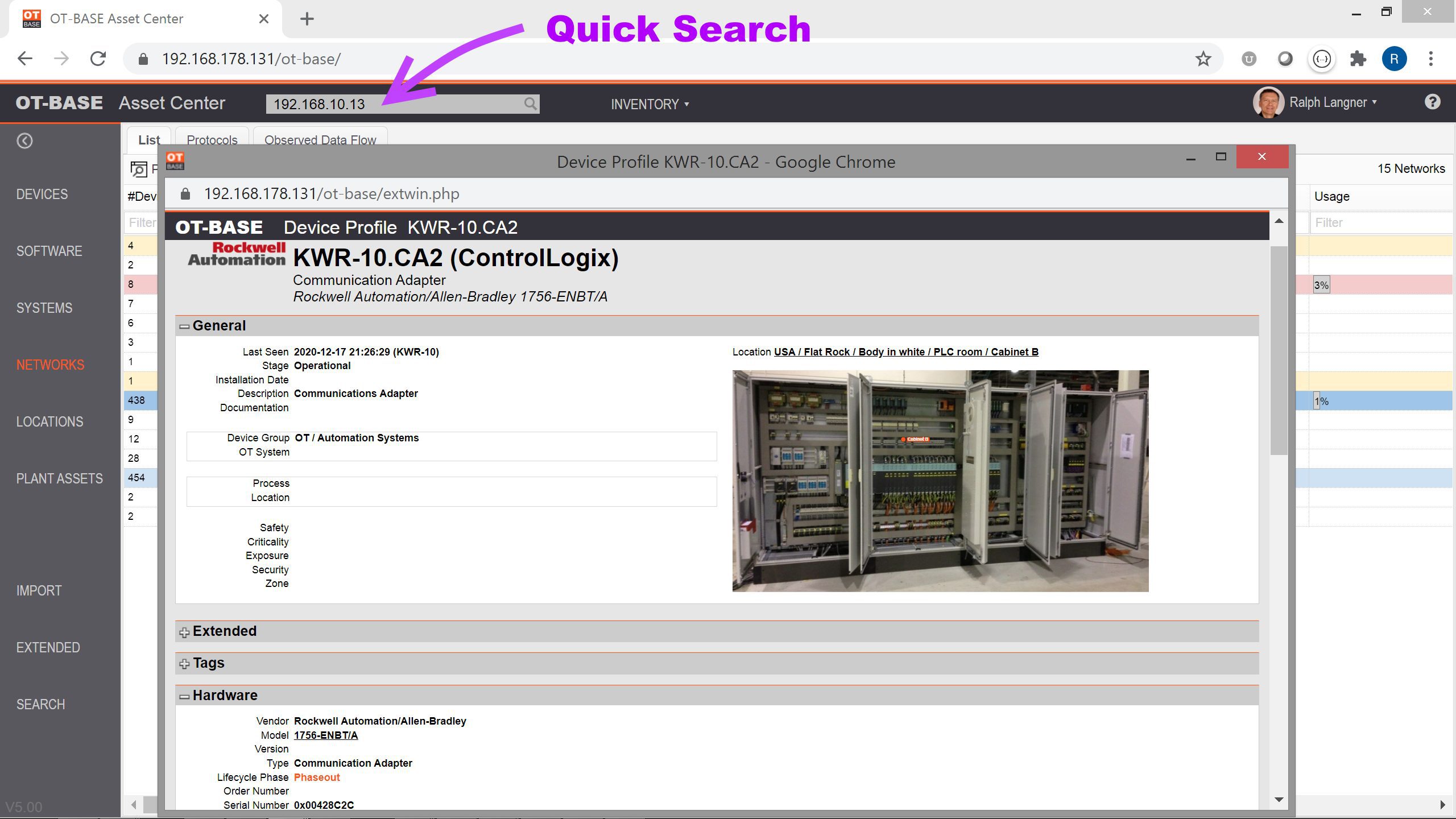
Inspect your OT devices in a list view with endless scroll, customizable columns, and powerful filter capabilities


Searching for a particular I/O module product, along with serial number ranges and firmware versions? Maybe in the process of identifying if you are affected by a new vendor product notification? The module list in OTbase will save you hours of unnecessary labor.
With device profiles, double clicking on an entry in the device list opens the profile for that device, which contains all the information that is stored about that device. Including:
Location
Lifecycle stage
Hardware configuration (I/O modules on the backplane)
Network connectivity
Network neighborhood topology diagram
Data flow
Known vulnerabilities
Asset health
Configuration timeline


Had there been new devices added to the network last week? What about three weeks ago? OTbase tells the story. From the dashboard, simply double click an entry in the table to get all the details.
See which operating system version, application software and libraries are installed on a specific OT device without having to log on to that device. The OT-BASE device profile has a full account of installed software that is automatically updated daily.
Browse your installed base for specific software, OS, firmware versions, using scope calibration, filtering, and sorting.
Pick an operating system version, software product or firmware from the OT-BASE software product listing and see right away where it is installed, along with additional details such as known vulnerabilities.

Which device is using a given IP or MAC address? Just type in the address in OTbase’s quick search field and press Enter. Bingo, there’s your device — along with all its details, such as make and model, location, installed firmware etc.
An enterprise-wide asset inventory requires that you can set access rights with high granularity. Some users shall only see what’s installed at a particular site, in a particular room, or cabinet. OTbase provides for all of this and also allows you to inherit user groups from your Active Directory.